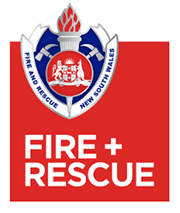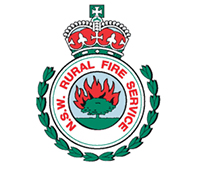Fire Safety
Home Fire Safety Checklist
In 2008/2009 the Fire & Rescue NSW reported attending 4,545 house fires. Of those, 1,054 were caused by unattended heat sources such as foodstuffs on stoves and another 651 by electrical short circuits. The areas of the house where most fires occur are the kitchen (2,156) sleeping areas (487) and lounge area (316).
 WHAT TO DO IN CASE OF A FIRE
WHAT TO DO IN CASE OF A FIRE
Help us help you, by using the following caution when in an emergency:
FACT – A fire can become unsurvivable in less than three minutes.
If you hear your smoke alarm and there’s a fi re in your home:
1. Keep calm and act quickly, get everyone out as soon as possible.
2. Don’t waste time investigating what’s happened or rescuing valuables.
3. If there is smoke, keep low where the air is clearer.
4. If it’s safe to do so, close all doors on the way out to prevent fire and smoke from spreading.
5. Once you get out, stay out. Never go back inside a burning building.
6. Call Triple Zero (000) from a neighbour’s or your mobile phone.
FIRE SAFETY EQUIPMENT
Practise what to do. Know your equipment. Only use a fi re blanket or fi re extinguisher within the first few seconds of ignition if you feel confident.
1. Keep fire blankets accessible in the kitchen and away from the stove.
2. Take hold of the two tabs and pull the blanket from its container.
3. Hold the tabs towards yourself and protect your hands.
4. Walk slowly towards the fi re and stretch out your arms in front of you.
5. As the blanket touches the top of the stove, place it over the fire.
6. Leave the blanket over the pot for at least thirty minutes.
7. If it’s safe to do so, turn off the gas/electricity at the stove or at the main supply.
8. Call Triple Zero (000). Firefighters will attend.
NB. A fire blanket is designed to be used once only.
FIRE EXTINGUISHERS PASS – Pull Aim Squeeze Sweep
Click to enlarge
Follow the manufacturer’s instructions. Locate equipment near exit door.
CHECKLIST
Are you fire safe in the home?
The fire services recommend this simple safety checklist to assist in keeping your home fire safe.
- Installing an adequate number of suitable smoke alarms and testing them regularly is the first step in your home fire safety plan.
- Having a written escape plan in case of fire and practicing it regularly.
- Make sure keys to all locked doors are readily accessible in case you need to escape.
- Never leave cooking or any other open flame including candles or oil burners unattended.
- Clean the lint filter of your clothes dryer each and every time you use it.
- Never smoke in bed and take extra care if consuming alcohol whilst smoking.
- In Winter take extra care when using heaters, electric blankets or open fires.
- Don’t overload power points and switch off appliances when not in use.
- Always keep lighters and matches away from children and educate them that they are “tools not toys” to only be used by responsible adults.
- If you have a garage or shed remember to take extra care with any stored chemicals and fuels and always refuel mowers, edgers etc when they are cold and in the open.
- If you have a gas, electric or wood BBQ always check that it is in safe working order before lighting and that it is always in the care of a responsible adult when in use.
- If you live in a bushfire prone area keep the ground around your home clear of leaves and other litter and remember to clean your gutters regularly.
Fire safety tips
- Remember that smoke from a fire will make you confused and that you cannot see in smoke.
- When asleep you will not smell smoke and it will in fact put you into a deeper sleep.
- If you have escaped from a home fire, remember once you get out stay out and dial Triple Zero (000).
- Oil, gas or wood heating units may require a yearly maintenance check.
- Only ever use fuses of recommended rating and install an electrical safety switch.
Printable Factsheet
Home Fire Safety Checklist (PDF, 400kb)







